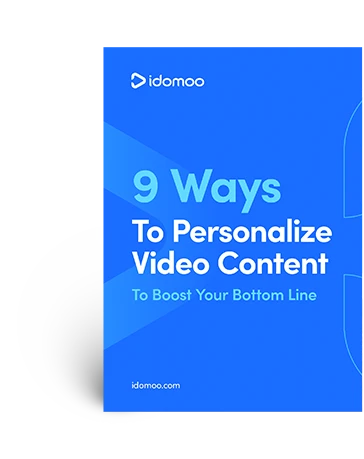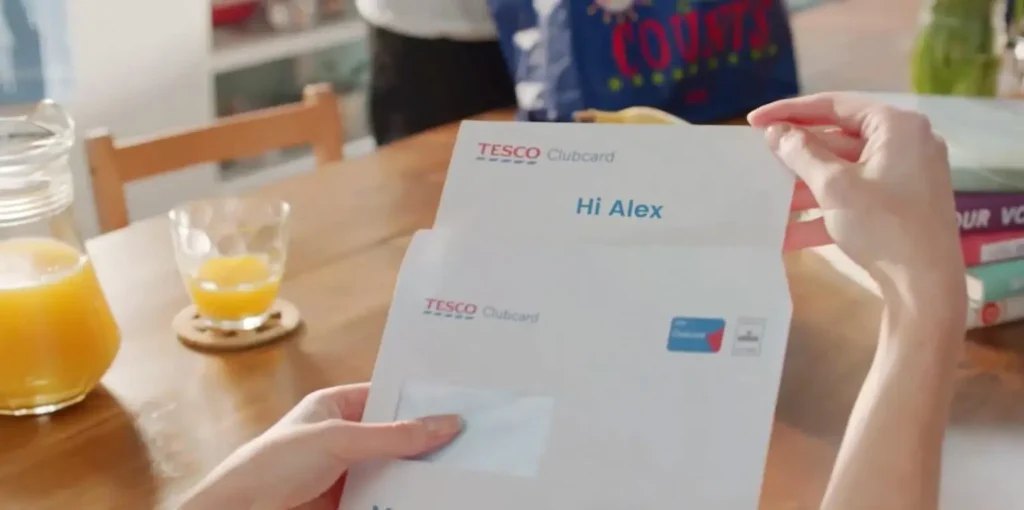In 1996, Bill Gates wrote an essay titled, “Content Is King,” coining a phrase that would be used for decades. Today, content’s rule over our lives is undeniable, with content marketing now an essential strategy for businesses. Unfortunately, with both brands and consumers constantly creating content these days, the world has become dramatically noisier.
In this age of near-infinite digital noise, most of us are experiencing content overload. Everything around us — social media, emails, ads, online video — is begging for attention, so we’ve been forced to develop a sort of internal filter. Unless something is relevant to us at that particular moment in time, it’s often swiped away.
To break through the digital noise, marketers have had to ensure that the messages and experiences they deliver are aligned with the customer’s immediate circumstances. In short, they’ve needed to shift from content marketing towards contextual marketing.
Still, while context marketing is already on the rise, there’s room to make it even better. When combined with a powerful digital marketing tool like video, it becomes a stronger strategy. Here’s everything you need to know about the power of context marketing and how including video can take it to the next level.
What Is Context Marketing?
Context marketing focuses on leveraging what you know about your audience in order to present content that speaks to their particular situation at a specific moment. Unlike traditional marketing, which leans towards mass messaging, context marketing zeroes in on delivering the right content to the right audience at the right time.
Examples of contextual marketing are everywhere. For instance, let’s say you use your favorite search engine to look up flights. If you click on any of the booking sites, you’ll probably also get contextual ads on the webpage for local hotels or rental cars. This obviously isn’t random and is a prime example of contextual advertising, where brands deliver relevant ads based on the viewer’s behavior.
Context adds that necessary dimension of value and meaning to the message or experience you’re delivering. This improves the chances that your target audience will engage with your brand.
In practice, this means finding opportunities to be genuinely helpful rather than just demanding attention without regard for the circumstances. Successful marketing campaigns in this space don’t simply push a product — they aim to present a solution, on the customers’ terms.
According to Salesforce’s Director of Marketing Strategy, Mathew Sweezey, context marketing efforts should strive to include these 5 elements:
- Available: The experience is provided to them when and how they want it.
- Permissioned: It’s better if they ask for it.
- Personal: Aim for a personalized delivery of the experience.
- Authentic: How empathetic are you being? What’s the tone and is it consistent?
- Purposeful: The experience goes beyond the basic use of the product.
So how can brands pull this off? The answer lies in the smart use of data. Your CRM system, for example, probably has plenty of data — demographics, purchase history, preferences and more — that you can leverage to provide a more contextually appropriate experience.
By crafting an interaction that fits a particular context, brands are showing consumers that they can be trusted to provide value with their communications. That trust is the foundation for improved engagement, greater demand and, ultimately, a better bottom line.
The Benefits of Contextual Marketing
Now that we’ve covered what contextual marketing is and how it works, let’s take a look at what it brings to the table. Here’s how it benefits both brands and customers:
- Increased engagement: People are more likely to engage with experiences that applies directly to their current situation. When you present relevant content based on real-time needs or interests, they’re more likely to pay attention and interact.
- Better customer experience: Contextual marketing helps you avoid delivering subpar, generic experiences that don’t serve your customers. This helps build trust, boosts retention and encourages customer loyalty by showing them you truly understand their needs and demands.
- Improved conversion rates: When your message and call to action (CTA) align with where someone is in their customer journey, the chance of conversion increases. Relevance leads to action, turning prospects into customers faster.
- Budget optimization: With greater results in key metrics like engagement and conversions, your marketing budget stretches further. Every dollar is spent wisely, reaching the right audience at the right time and eliminating wasteful spending on ineffective outreach.
All in all, contextual marketing is smarter. It doesn’t just deliver personalized experiences but solves common marketing challenges like audience fatigue, irrelevant messaging and wasted ad spend. It helps your brand cut through the noise and stand out, driving real business results.
A New Way To Approach Context Marketing
Most commonly, marketers approach context marketing by concentrating on distribution. In other words, the content stays more or less the same, with the focus more on controlling how and where that content is shared in order to make sure it’s presented in the right circumstances.
Taco Bell, for instance, partnered with Waze to present special offers in-app, but only when drivers were actually near a Taco Bell location.
But there’s another approach that marketers can take. Rather than making sure your marketing content is delivered in the right context, how about having it evolve to match the context? It’s no longer just about where your content lives, but about how it responds to the user’s specific circumstances.
Post on
This is where Next Generation Video comes in. Think of it as the evolved form of traditional video. No longer static and made for general audiences, Next Gen Video is data-driven and dynamic. It can be personalized, made interactive and even powered by AI.
Video Becomes Contextual
Imagine a single piece of content that evolves — changing scenes, messaging and offers — in real time based on different user contexts, data or actions. What kind of content can do that? Text? An image? Sure — and now video can too.
By connecting to any live data feed, a single video can have infinite variations, each one adapting to the circumstances in which it’s being presented with real-time accuracy. This means videos can update their messaging, visuals and even calls to action based on user behavior, location and more, creating a truly one-of-a-kind user experience.
When we talk about evolving videos, there are a lot of examples to choose from. A contextual greeting like the one below includes constantly updated content. Check out how it pulls from live data to ensure that the information is timely and accurate.
With Next Gen Video, even the very structure of the video can change, presenting completely different scenes and content depending on the latest data. This dynamic approach not only boosts the overall experience but also creates a sense of personalization and immediacy that static content just can’t match.
For brands and organizations, dynamic, data-driven video can be an invaluable tool for powering context marketing efforts.
How exactly? We’ll get into that more below.
The Power of Context in Action
Next Generation Video incorporates game-changing features such as in-player customization and interactivity (which both rely on user input and action), but its ability to draw from live data feeds is especially relevant for context marketing. These can include first- or third-party data feeds that affect the video content in real time and can range from details like a viewer’s current device to their current location.
Using dynamic video is a smart way to deliver messages that provide relevant value — that your customers will actually care about and engage with. Some possible use cases include:
- A video connected to retail inventory to show what’s in stock or on sale, updating in real time based on product availability and pricing
- A shareable video that changes languages depending on where the viewer is located
- A travel recommendation that displays sunny getaways to anyone experiencing cold weather
- A restaurant promo video that showcases breakfast foods if watched in the morning and dinner dishes if seen in the evening
- An exclusive birthday offer with a timer that counts down to the big day
As you can see, it’s not just about delivery anymore, whether that’s email marketing, banner ads or app notifications. Before, you could only control where and when you sent your message, not when it’s actually viewed. But Next Gen Video, the content adapts to the user’s context the moment they engage, no matter where or when that happens.
And that’s just a starting point. Next Gen Video can also collect first-party data for you. With the rise of restrictions on third-party cookies, brands now face more challenges when it comes to accessing third-party data. This shift makes first-party data more critical than ever.
Thanks to interactivity, viewers can add their own information and the video instantly updates to reflect that. Take the mortgage calculator below, for instance. Users just input the home value, loan amount, credit score and loan term and instantly get a personalized breakdown of their mortgage details. Try it for yourself by clicking the lightning bolt icon in the player!
The bottom line? Next Generation Video doesn’t just deliver content — it provides relevant experiences that are tailored to each individual, in real time. It’s context marketing taken to the next level, giving viewers exactly what they want, when they want it.
Video That Fits the Context
If content is king, then context is undoubtedly queen. To compare them to chess, content is the piece that’s needed to play the game, but context is what’s often behind the most powerful and effective moves.
At Idomoo, we’ve long subscribed to the idea that the one-size-fits-all approach is of the past. Today, the content, messages and experiences that brands deliver must be personalized and fit the context of each viewer’s circumstances. That’s why we developed a video platform that makes this all possible.
For years, our Next Generation Video Platform has helped brands across industries quickly create data-driven, dynamic videos for their customers. And now, with Lucas, our AI Video Creator, creating Next Gen Video is even easier.
Lucas can generate one-off videos tailored to individual viewers or use automation to create millions of Personalized Interactive Videos at scale. He streamlines the entire process, saving you time while delivering top-notch results.
Whether you have an audience of a few thousand or several million, our industry-leading platform is powerful enough to handle it all at scale.
Want to learn more? We’d love to show you exactly how we can revolutionize your context marketing strategies and help you reach your business goals.







